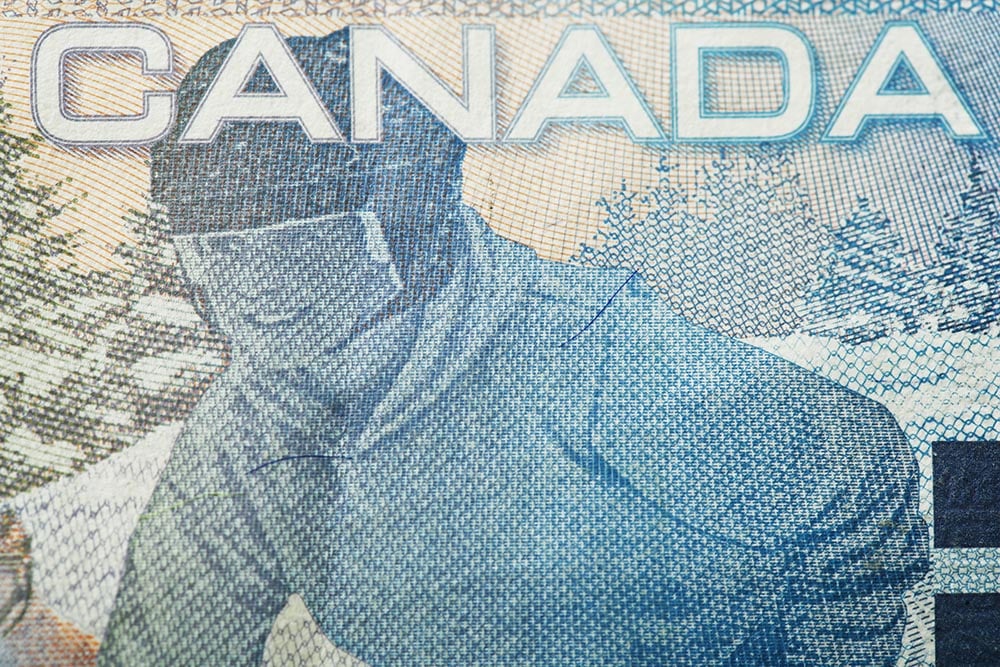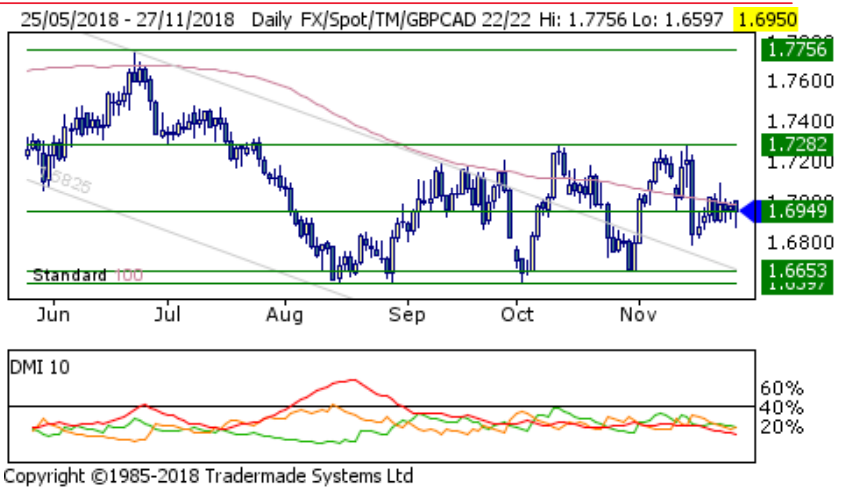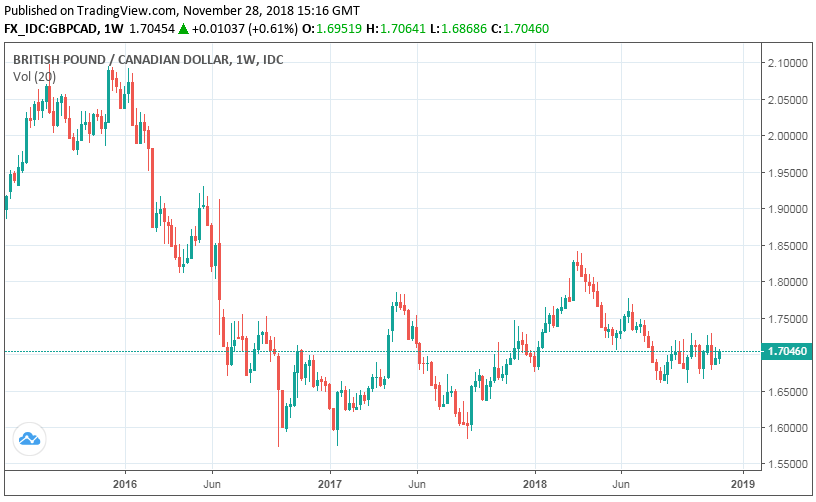Pound-to-Canadian-Dollar Rate to See "Steady Selling Pressure" says Scotiabank
- Written by: James Skinner

Image © Adobe Stock
- GBPCAD may see fresh losses if rate doesn't clear 1.73.
- As the technical picture on charts will turn decidedly bearish.
- But Friday's Canadian GDP figures could lift rate over the hurdle.
The Pound-to-Canadian-Dollar rate could be set for fresh declines over coming days because a partial retracement of earlier losses is now acting as an open invitation for investors to swap the British currency for Canada's Loonie, according to Toronto-headquartered Scotiabank.
The exchange rate was quoted 0.60% higher for the 2018 year on Wednesday after having recovered some of the ground lost in response to November's calamitous turn in the Brexit saga, but studies of "technical" signals on charts suggest it is unlikely to hold that gain for very long.
"We have noted previously that we think the heavy net GBP selling seen two weeks ago set the top on this market for the moment and short-term gains, taking back around half of that sell-off, appear to be drawing out renewed selling interest (evident via a short-term, rounded top on the intraday chart)," says Eric Theoret, a technical strategist at Scotiabank. "We look for the GBP to retest the 1.7280/85 double top trigger (1.6650—major support now)."

Above: Scotiabank technical analysis of GBP/CAD exchange rate.
Following a fortnight of decent gains a "double top" appeared on the Pound-to-Canadian-Dollar rate chart on November 15, triggering a a steep sell-off that took the exchange rate down from 1.73 to a low of 1.68. Theoret and the Scotiabank team say the market is now likely to test that 1.73 threshold again over coming days.
A double top is a chart pattern that technical analysts often see as indicating that a short-term trend reversal is in the pipeline. If the exchange rate does not clear that 1.73 hurdle on the next visit then a so-called "triple top" will have formed on the charts, which typically indicates that a reversal of a longer-term trend is in the cards.
In plain English, a triple top forming on the above chart could give way to a another period of steep losses for the Pound-to-Canadian-Dollar rate, so a lot depends on whether the rate can clear the November 15 hurdle of 1.73 on the next visit. And it's notable that a lot of the news flowing out of London suggests the rate might struggle to do that.
"Polling suggests there is less support for May’s plan than to either remain or take the no deal exit, suggesting the PM’s efforts to promote her plan this week have fallen on deaf ears," says Shaun Osborne, chief currency strategist at Scotiabank and colleague of Theoret's.
Osborne and Theoret warned Wednesday that Sterling could see further losses against the U.S. Dollar over coming days, which would mean losses for the Pound-to-Canadian-Dollar rate too if the GBP/USD move is not matched by an increase in the USD/CAD rate. Other analysts are also warning of big losses for the Pound in December, for reasons relating to Brexit.

Above: Weekly chart showing gradual upward GBP/CAD trend beginning in Jan 2017.
"The CAD remains vulnerable on the back of a renewed deterioration in the outlook for relative central bank policy as domestic rate expectations soften," says Scotiabank's Osborne. "The options market is signaling a continued rise in the demand for protection against CAD weakness."
One potential saving grace for the exchange rate could come on Friday, in the form of Canada's GDP growth figure for September, which some Canadian analysts say will leave the currency market disappointed.
Consensus is for the economy to have grown at an annualised pace of 2% during the third quarter and by 0.1% for September alone, but Toronto-headquartered CIBC Capital Markets and TD Securities both beg to differ.
They say Canada's economy most likely stalled in September with GDP growth of 0% and that quarterly growth is likely to come in around 1.8%. Scotiabank's forecast for the GDP number is unknown.
"That’s in line with what the Bank of Canada assumed, so the mystery to us is why they were so confidently hawkish in October given that the economy isn’t growing above its non-inflationary potential," says Avery Shenfeld, chief economist at CIBC.
A poor GDP number Friday would hurt the Canadian Dollar because it would place a question mark over pledges the Bank of Canada (BoC) made to the market in October. Risks to the Canadian economy have also risen of late.
The Bank of Canada raised its interest rate by 25 basis points to 1.75% in October and said it will go on lifting its benchmark rate over coming quarters, potentially taking the cash rate up to 3.5%.
Markets have since been attempting to gauge whether the BoC will raise rates again in December or wait until next year, although the recent fortnight has seem investors and analysts begin to give up hopes of another 2018 hike.
The CIBC team raised their year-end forecast for the USD/CAD rate to 1.31 recently, from 1.28 previously, denoting the expectation of a weaker Canadian Dollar and stronger U.S. Dollar.
They predict the Pound-to-Canadian-Dollar rate will rise to 1.73 before year-end and that the exchange rate will end 2019 at 1.94.
Advertisement
Bank-beating exchange rates. Get up to 5% more foreign exchange by using a specialist provider to get closer to the real market rate and avoid the gaping spreads charged by your bank when providing currency. Learn more here




